

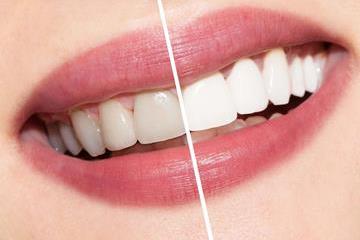
Tooth whitening (termed tooth bleaching when utilizing bleach), is either restoration of natural tooth shade or whitening beyond natural tooth shade, depending on the definition used.
Restoration of the underlying, natural tooth shade is possible by simply removing surface (extrinsic) stains (e.g. from tea, coffee, red wine and tobacco) and calculus (tartar). This is achieved by having the teeth cleaned by a dental professional (commonly termed "scale and polish".
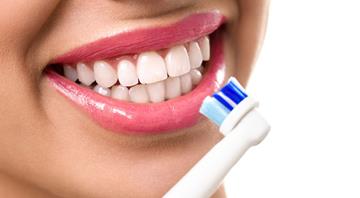
Teeth cleaning is part of oral hygiene and involves the removal of dental plaque from teeth with the intention of preventing cavities(dental caries), gingivitis, and periodontal disease.
People routinely clean their own teeth by brushing and interdental cleaning, and dental hygienists can remove hardened deposits (tartar) not removed by routine cleaning. Those with dentures and natural teeth may supplement their cleaning with a denture cleaner.
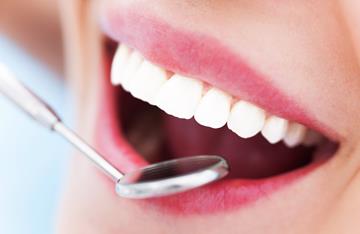
Regular oral exams are a important part of preventative health care. During a dental exam, the dentist or hygienist will clean your teeth and check for cavities and gum disease. The dentist or hygienist will also evaluate your risk of developing other oral health problems, as well as check your face, neck and mouth for abnormalities.
A dental exam might also include dental X-rays (radiographs) or other diagnostic procedures.
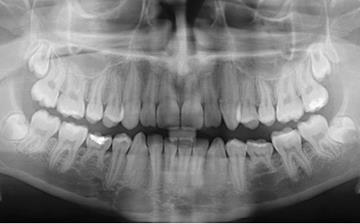
X-rays, also known as radiographs, are an essential part of any dental care treatment plan. They are diagnostic, but they can also be preventative, by helping a dentist diagnose potential oral care issues in a patient’s mouth before they become a major problem. An x-ray is a type of energy that passes through soft tissues and is absorbed by dense tissue. Teeth and bone are very dense, so they absorb X-rays, while X-rays pass more easily through gums and cheeks.
X-rays are divided into two main categories, intraoral and extraoral. Intraoral is an X-ray that is taken inside the mouth. An extraoral X-ray is taken outside of the mouth.
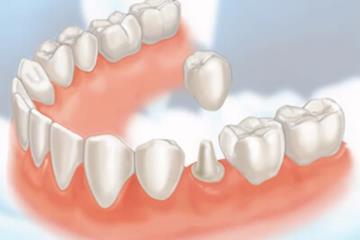
A crown, sometimes known as dental cap, is a type of dental restoration which completely caps or encircles a tooth or dental implant. Crowns are often needed when a large cavity threatens the ongoing health of a tooth. They are typically bonded to the tooth using a dental cement.
Crowns can be made from many materials, which are usually fabricated using indirect methods. Crowns are often used to improve the strength or appearance of teeth. While inarguably beneficial to dental health, the procedure and materials can be relatively expensive.
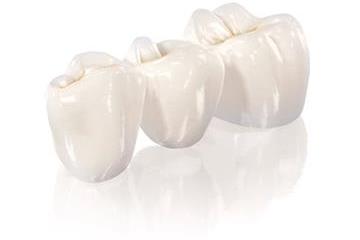
Bridges are fixed prosthetic devices that are cemented onto existing teeth or implants, by a dentist or prosthodontist.
Fillings help restore teeth damaged by decay back to their normal function, and can prevent further decay. Your dentist will consider a number of factors when choosing which type of filling material is best for you. These factors include the extent of the repair, where in your mouth the filling is needed and the cost.
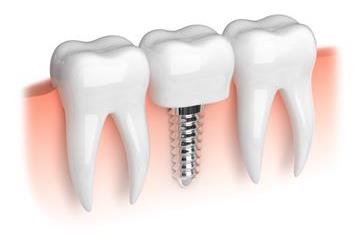
Dental implants are metal posts or frames that are surgically positioned into the jawbone beneath your gums. Once in place, they allow your dentist to mount replacement teeth onto them. Because implants fuse to your jawbone, they provide stable support for artificial teeth.
Dentures and bridges mounted to implants won't slip or shift in your mouth — an especially important benefit when eating and speaking. This secure fit helps the dentures and bridges — as well as individual crowns placed over implants — feel more natural than conventional bridges or dentures.
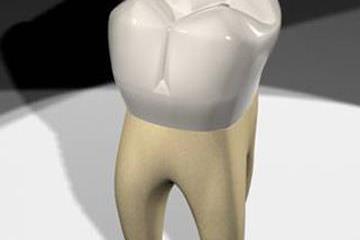
Teeth are extracted for a variety of reasons like, decay has reached deep inside the tooth, infection has destroyed a large portion of the tooth or surrounding bone. Many dentists recommend extracting impacted teeth that are only partially erupted. Bacteria can enter around a partially erupted tooth and cause an infection, which can extend into the surrounding bone and become extremely serious.
Impacted teeth continue trying to break through the gum tissue even if there is not enough room to accommodate them. The continued pressure caused by this attempted eruption can eventually damage the roots of nearby teeth. Removing a tooth that is impacted can often prevent infection, damage to adjacent teeth and bone, and save pain in the years to come.

A root canal is a treatment to repair and save a badly damaged or infected tooth. The procedure involves removing the damaged area of the tooth (the pulp), cleaning and disinfecting it and then filling and sealing it. The common causes affecting the pulp are a cracked tooth, a deep cavity, repeated dental treatment to the tooth or trauma. The term "root canal" comes from cleaning of the canals inside the tooth's root. Teeth have a soft core called dental pulp. The pulp extends from the crown — the visible part of the tooth — to the tip of the tooth's root in the jawbone. The pulp contains nerves, blood vessels and connective tissue.
When a tooth is cracked or has a deep cavity, bacteria can enter the pulp. Left untreated, bacteria and decaying material can cause a serious infection or a tooth abscess, leading to pulp death, bone loss and loss of the tooth itself. Signs and symptoms may include swelling around your face and neck, a hole in your tooth, toothache or tooth pain, gum swelling, and temperature sensitivity.
Copyright © Custom Smile Dentistry. All Rights Reserved.